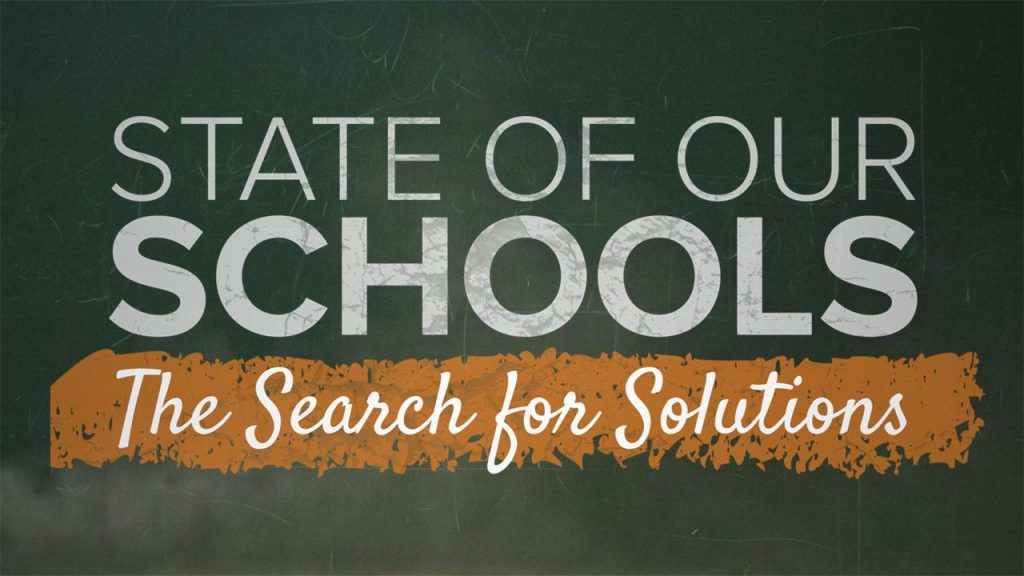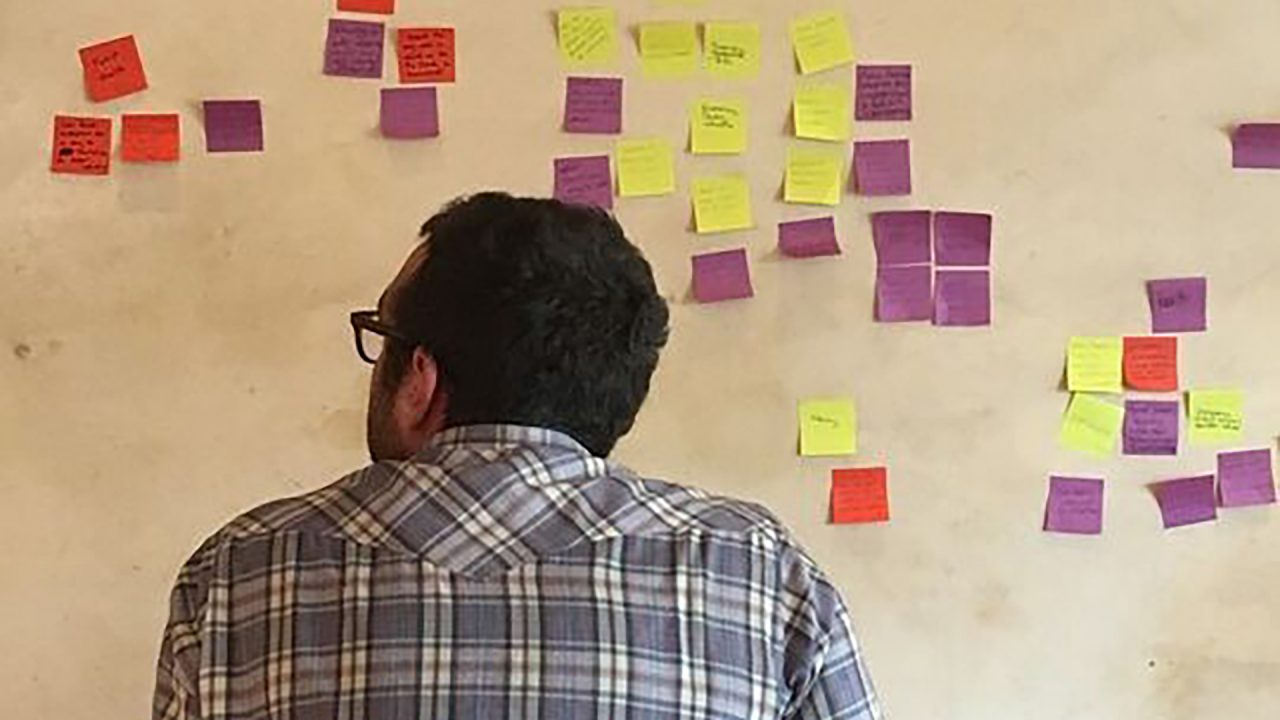“People are tired of reporting that lacks any hope or humanity,” says Jeff Harris, news director at CBS’s Chicago station WBBM-TV. Hard to disagree with that sentiment — we’ve all heard the complaints ourselves. But WBBM and a small group of other stations are part of a new experiment that addresses the problem in a very specific way that does not involve feel-good features or viral videos. Where it succeeds, supporters say it can enhance a station’s journalism, reputation, audience engagement and even productivity.
The approach is called “solutions journalism.” The idea sounds simple enough: report just as rigorously on solutions as you do on problems. But it turns out that’s not as easy as it sounds. “Solutions journalism is not a light switch that you flip,” says Harris. Rather, solutions journalism applies the techniques used to investigate problems to investigate potential answers, with the same skeptical reporting eye. “The distinction here is that we’re not pushing for a specific solution or resolution,” says Harris. “We’re reporting on other communities and other folks who may have a solution to the problem that we’re investigating.”
The process begins with a formal newsroom training program created by the Solutions Journalism Network, a nonprofit whose impact has grown steadily in the print and digital world since its founding six years ago but which has only recently entered local TV newsrooms.
After a successful pilot at WEWS-TV, the Scripps ABC affiliate in Cleveland where Harris was news director before moving to Chicago, the Solutions Journalism Network hired Deborah Potter, veteran broadcast journalist turned teacher, textbook author and trainer, to recruit 10 stations interested in the concept. “Why would a competitive television station want to try it? To be different,” says Potter. “One of the complaints about local TV is it’s all the same. And so one of the conversations we had was: ‘This is a way potentially to distinguish what you do, what this station does, from what everybody else is doing.’”
Potter crushed it: she got 15 stations in 14 markets (there’s one duopoly) to buy the pitch. It helped that she picked stations she thought would be receptive — “work with the willing” — and it really helped that the training program was free, underwritten by the Chan Zuckerberg Initiative, which also helped fund some of the stations’ resulting projects.
Next, Solution Journalism Network’s Carolyn Robinson and her colleagues visited each of the stations earlier this year to conduct a workshop for the entire newsroom, replete with techniques and examples. “Everybody has to be involved,” says Robinson, “because the idea is that this seeps throughout the newsroom. Everybody starts asking each other, ‘Is there a solutions angle here?’” She also held brainstorming sessions with key editorial leaders to identify a solutions-oriented project and even met with station promotion teams to help sell the idea.

“We talked about investigating solutions,” Robinson says. “Same skill set [as exposing problems], same exact kind of approach to a story, but we’re looking at what’s working, how well is it working, for how long, and for whom? And one of the things that people started realizing is there’s really a hunger for that kind of reporting. If you stop right at the problem, people are like, ‘Well, thanks a lot. Here’s another problem in my lap. How do we move forward as a society or as a community to start addressing these issues?’”
After the workshop, KXAN-TV, Nexstar’s NBC affiliate in Austin, went all in. The station created a project called Save Our Students, prompted by school shootings in Texas but focused on solutions for improving mental health in schools. (Check out the project’s landing page for an idea of the scope.) Josh Hinkle, who heads up investigations and innovation at KXAN, used the Chan Zuckerberg funds to send teams to California and Ohio to investigate potential solutions there. He says that the newsroom produced about 40 on-air stories, multiple digital features, and several live events with policy-makers and regular viewers, including two town halls — an essential part of the formula. “I didn’t connect the dots and understand fully how important engagement would be,” says KXAN news director Chad Cross. “But that did turn out to be the way that we were able to get in front of the people who have power to consider these ideas and possibly implement them.”
But first, Hinkle and Cross had to convince colleagues that solutions journalism is not advocacy journalism and then keep the pressure on their reporters for a hard-nosed analysis of what’s working and what isn’t. “Understanding the effectiveness of this solution is what’s going to make this reporting unique,” says Cross. “And not just a profile of an idea. And so that’s where it gets to be more challenging than you might think.”
Hinkle hopes that solutions journalism becomes part of the station’s daily routine, even without external funds to help fuel a special project. “That’s a big challenge for a newsroom: to think beyond this big initiative. How can we make it more of something we do on a regular basis?”
Morgan Loew, chief investigative reporter at KPHO-TV, Meredith’s CBS affiliate in Phoenix, is also an enthusiastic booster of the solutions approach. “Okay, we’re going to show you some problems, but we’d better come up with some ways that these problems can be solved, and not just in a tag.” Loew used the outside money to pay for data-journalism training for a series called State of Our Schools — an ambitious project that yielded unique insights about which Arizona schools were succeeding (or struggling) and why.

For a month and a half, the station aired two big stories per week in its evening newscasts along with additional solutions-oriented quicker hits in the mornings. “I think that this model of adding a solutions angle is something that we are going to be applying to future projects, not only because I think it’s good journalism, but our managers seem to like it,” says Loew. “At the end of the day, if I can tell my bosses ‘Give me a small team and we can do 12 stories on this issue,’ they’re going to like that.”
However, it turns out the experiment in solutions journalism for local TV newsrooms has not been an across-the-board success. Hat tip to Solutions Journalism Network for gulping its own Kool-Aid: it’s as tough on its own program as it teaches journalists to be when they investigate solutions. “We try things out like this,” says Robinson. “And we want to iterate from that, and improve and change it: what did work, what isn’t working?”
So, with support from the Reynolds Journalism Institute, Potter returned to all the stations this summer to assess the results of the program — not just the projects, but changes in the newsrooms themselves. Potter estimates that half the stations have embraced the project. “The other ones are still struggling, and there are a few that just aren’t going to do it.”
She and Robinson say factors like the station’s news culture, its size, and the presence of a strong champion on the leadership team can make the difference. WBBM’s Jeff Harris agrees that the program is not for everyone. “There are places where it is a match, and there are places where it’s not.”

Aside from this project, the Solutions Journalism Network is working with journalism collaborations that include local TV newsrooms, like NBC’s WCAU-TV and Broke in Philly (which we reported on earlier this year) and TEGNA’s NBC affiliate WCNC-TV and the Charlotte Journalism Cooperative, created in partnership with our underwriter, the Knight Foundation.
Potter, who’s still gathering ratings data and digital metrics from the stations, is writing a playbook for how to implement solutions journalism in a television newsroom. And Carolyn Robinson is back on the road, looking for half a dozen stations that want to try the program next year. She’d love to hear from you if you’re interested.
“I really think journalists can be inspired by the idea that this can reinvigorate not only us in our newsroom, but also our audience,” says KXAN’s Chad Cross. “This may bring some of them back to us, when they see that we’re not just reporting on all the negativity, but we’re also exploring some of the positive things that are happening in a really meaningful way.”
